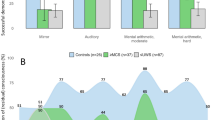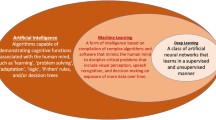Abstract
The permutation entropy (PE) of the electroencephalographic (EEG) signals has been proposed as a robust measure of anesthetic drug effect. The calculation of PE involves the somewhat arbitrary selection of embedding dimension (m) and lag (τ) parameters. Previous studies of PE include the analysis of EEG signals under sevoflurane or propofol anesthesia, where different parameter settings were determined using a number of different criteria. In this study we choose parameter values based on the quantitative performance, to quantify the effect of a wide range of concentrations of isoflurane on the EEG. We analyzed a set of previously published EEG data, obtained from 29 patients who underwent elective abdominal surgery under isoflurane general anesthesia combined with epidural anesthesia. PE indices using a range of different parameter settings (m = 3–7, τ = 1–5) were calculated. These indices were evaluated as regards: the correlation coefficient (r) with isoflurane end-tidal concentration, the relationship with isoflurane effect-site concentration assessed by the coefficient of determination (R 2) of the pharmacokinetic–pharmacodynamic models, and the prediction probability (PK). The embedding dimension (m) and lag (τ) have significant effect on the r values (Two-way repeated-measures ANOVA, p < 0.001). The proposed new permutation entropy index (NPEI) [a combination of PE(m = 3, τ = 2) and PE(m = 3, τ = 3)] performed best among all the parameter combinations, with r = 0.89(0.83–0.94), R 2 = 0.82(0.76–0.87), and PK = 0.80 (0.76–0.85). Further comparison with previously suggested PE measures, as well as other unrelated EEG measures, indicates the superiority of the NPEI. The PE can be utilized to indicate the dynamical changes of EEG signals under isoflurane anesthesia. In this study, the NPEI measure that combines the PE with m = 3, τ = 2 and that with m = 3, τ = 3 is optimal.







Similar content being viewed by others
References
Jameson LC, Sloan TB. Using EEG to monitor anesthesia drug effects during surgery. J Clin Monit Comput. 2006;20:445–72.
Musizza B, Ribaric S. Monitoring the depth of anaesthesia. Sensors. 2010;10:10896–935.
Rampil IJ. A primer for EEG signal processing in anesthesia. Anesthesiology. 1998;89:980–1002.
Viertiö-Oja H, Maja V, Särkelä M, Talja P, Tenkanen N, Tolvanen-Laakso H, Paloheimo M, Vakkuri A, Yli-Hankala A, Meriläinen P. Description of the Entropy™ algorithm as applied in the Datex-Ohmeda S/5™ Entropy Module. Acta Anaesthesiol Scand. 2004;48:154–61.
Elbert T, Ray WJ, Kowalik ZJ, Skinner JE, Graf KE, Birbaumer N. Chaos and physiology: deterministic chaos in excitable cell assemblies. Physiol Rev. 1994;74:1–47.
Li X, Sleigh JW, Voss LJ, Ouyang G. Measure of the electroencephalographic effects of sevoflurane using recurrence dynamics. Neurosci Lett. 2007;424:47–50.
Li X, Cui S, Voss LJ. Using permutation entropy to measure the electroencephalographic effects of sevoflurane. Anesthesiology. 2008;109:448–56.
Li D, Li X, Liang Z, Voss LJ, Sleigh JW. Multiscale permutation entropy analysis of EEG recordings during sevoflurane anesthesia. J Neural Eng. 2010;7:046010.
Revuelta M, Paniagua P, Campos JM, Fernández JA, Martinez A, Jospin M, Litvan H. Validation of the index of consciousness during sevoflurane and remifentanil anaesthesia: a comparison with the bispectral index and the cerebral state index. Br J Anaesth. 2008;101:653–8.
Bruhn J, Ropcke H, Hoeft A. Approximate entropy as an electroencephalographic measure of anesthetic drug effect during desflurane anesthesia. Anesthesiology. 2000;92:715–26.
Ferenets R, Lipping T, Anier A, Jäntti V, Melto S, Hovilehto S. Comparison of entropy and complexity measures for the assessment of depth of sedation. IEEE Trans Biomed Eng. 2006;53:1067–77.
Bandt C, Pompe B. Permutation entropy: a natural complexity measure for time series. Phys Rev Lett. 2002;88:174102.
Bandt C. Ordinal time series analysis. Ecol Model. 2005;182:229–38.
Olofsen E, Sleigh JW, Dahan A. Permutation entropy of the electroencephalogram: a measure of anaesthetic drug effect. Br J Anaesth. 2008;101:810–21.
Jordan D, Stockmanns G, Kochs EF, Pilge S, Schneider G. Electroencephalographic order pattern analysis for the separation of consciousness and unconsciousness: an analysis of approximate entropy, permutation entropy, recurrence rate, and phase coupling of order recurrence plots. Anesthesiology. 2008;109:1014–22.
Cao Y, Tung WW, Gao JB, Protopopescu VA, Hively LM. Detecting dynamical changes in time series using the permutation entropy. Phys Rev E. 2004;70:046217.
Hagihira S, Takashina M, Mori T, Mashimo T, Yoshiya I. Changes of electroencephalographic bicoherence during isoflurane anesthesia combined with epidural anesthesia. Anesthesiology. 2002;97:1409–15.
Krishnaveni V, Jayaraman S, Anitha L, Ramadoss K. Removal of ocular artifacts from EEG using adaptive thresholding of wavelet coefficients. J Neural Eng. 2006;3:338–46.
Mckay ID, Voss LJ, Sleigh JW, Barnard JP, Johannsen EK. Pharmacokinetic-pharmacodynamic modeling the hypnotic effect of sevoflurane using the spectral entropy of the electroencephalogram. Anesth Analg. 2006;102:91–7.
Li X, Li D, Liang Z, Voss LJ, Sleigh JW. Analysis of depth of anesthesia with Hilbert-Huang spectral entropy. Clin Neurophysiol. 2008;119:2465–75.
Smith WD, Dutton RC, Smith NT. Measuring the performance of anesthetic depth indicators. Anesthesiology. 1996;84:38–51.
Vanluchene AL, Vereecke H, Thas O, Mortier EP, Shafer SL, Struys MM. Spectral entropy as an electroencephalographic measure of anesthetic drug effect: a comparison with bispectral index and processed midlatency auditory evoked response. Anesthesiology. 2004;101:34–42.
Ellerkmann RK, Liermann VM, Alves TM, Wenningmann I, Kreuer S, Wilhelm W, Roepcke H, Hoeft A, Bruhn J. Spectral entropy and bispectral index as measures of the electroencephalographic effects of sevoflurane. Anesthesiology. 2004;101:1275–82.
Ihmsen H, Schywalsky M, Plettke R, Priller M, Walz F, Schwilden H. Concentration-effect relations, prediction probabilities (Pk), and signal-to-noise ratios of different electroencephalographic parameters during administration of desflurane, isoflurane, and sevoflurane in rats. Anesthesiology. 2008;108:276–85.
Bruhn J, Röpcke H, Rehberg B, Bouillon T, Hoeft A. Electroencephalogram approximate entropy correctly classifies the occurrence of burst suppression pattern as increasing anesthetic drug effect. Anesthesiology. 2000;93:981–5.
Hagihira S, Takashina M, Mori T, Ueyama H, Mashimo T. Electroencephalographic bicoherence is sensitive to noxious stimuli during isoflurane or sevoflurane anesthesia. Anesthesiology. 2004;100:818–25.
Sleigh JW, Leslie K, Voss LJ. The effect of skin incision on the electroencephalogram during general anesthesia maintained with propofol or desflurane. J Clin Monit Comput. 2010;24:307–18.
Miller A, Sleigh JW, Barnard J, Steyn-Ross DA. Does bispectral analysis of the electroencephalogram add anything but complexity? Br J Anaesth. 2004;92:8–13.
Hagihira S, Takashina M, Mori T, Mashimo T, Yoshiya I. Practical issues in bispectral analysis of electroencephalographic signals. Anesth Analg. 2001;93:966–70.
Acknowledgments
This research was partly supported by National Natural Science Foundation of China (61025019, 61203210) and Specialized Research Fund for the Doctoral Program of Higher Education in China (20101333110006).
Author information
Authors and Affiliations
Corresponding author
Appendix
Appendix
1.1 Calculation of existing EEG measures of DoA
The approximate entropy (AE) is a statistical parameter that quantifies the predictability of subsequent amplitude values of the EEG based on the knowledge of the previous values. The AE looks at previous sequences of length m and then establishes the negative logarithmic probability that these sequences predict a new sequence of m + 1 points to within an error range of r. The value of the AE depends on the values chosen for the parameters: m (embedding dimension), and r (noise threshold) [10]. In this study, m = 2 and r = 0.2 SD were selected in the light of previous work [10].
SEF95 quantifies the frequency below which 95 % of the power in the power spectrum resides [3]. Two sub-parameters in the BIS monitor, BetaRatio and SynchFastSlow, were calculated. The former is a ratio between empirically determined frequency bands (30–47 and 11–20 Hz), and the latter is defined as the ratio of the sum of all bispectrum peaks in the area 0.5–47 Hz over the sum of the bispectrum in the area 40–47 Hz [3, 28]. To calculate these measures, a segment-averaging approach was used, similar to that used in the BIS monitor: 1 min of EEG signals were divided into a series of 2-s epochs, with each epoch overlapping by 75 %, and the Fourier transform was applied to each epoch after windowed by a Blackman function [3, 29].
The spectral entropy was calculated according to the algorithm in the Datex-Ohmeda S/5™ Entropy Module (Datex-Ohmeda Division, Instrumentarium Corp., Helsinki, Finland), where two separate entropy values are calculated using different frequency bands in the time–frequency balanced spectrum: State entropy (SE) (0.8–32 Hz) and Response entropy (RE) (0.8–47 Hz) [4].
Rights and permissions
About this article
Cite this article
Li, D., Liang, Z., Wang, Y. et al. Parameter selection in permutation entropy for an electroencephalographic measure of isoflurane anesthetic drug effect. J Clin Monit Comput 27, 113–123 (2013). https://doi.org/10.1007/s10877-012-9419-0
Received:
Accepted:
Published:
Issue Date:
DOI: https://doi.org/10.1007/s10877-012-9419-0




